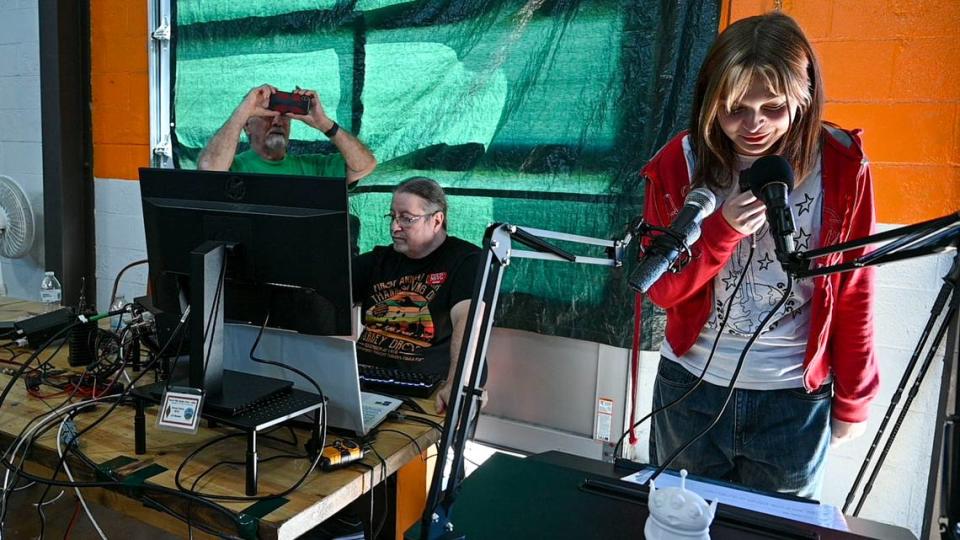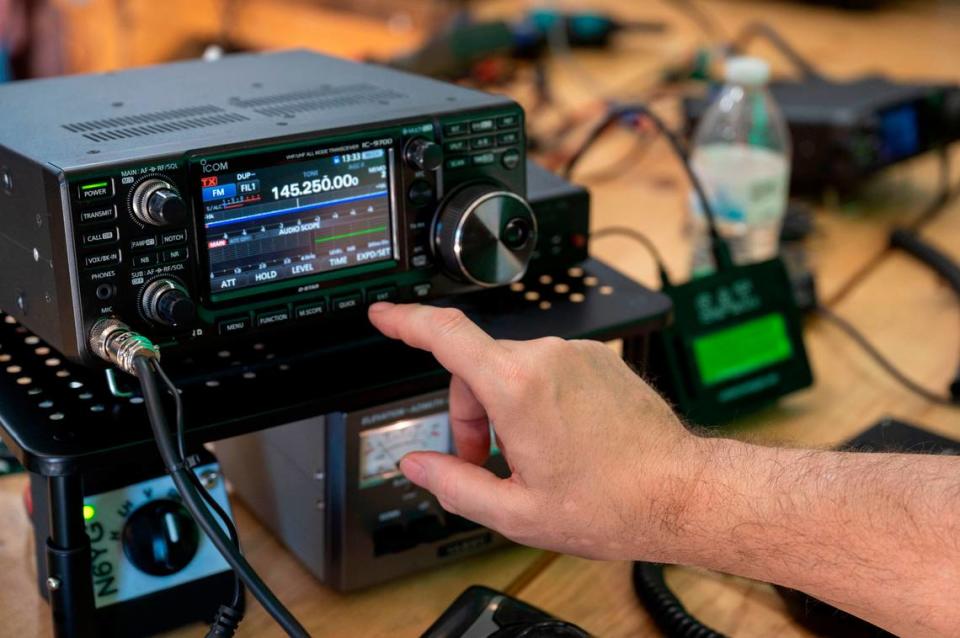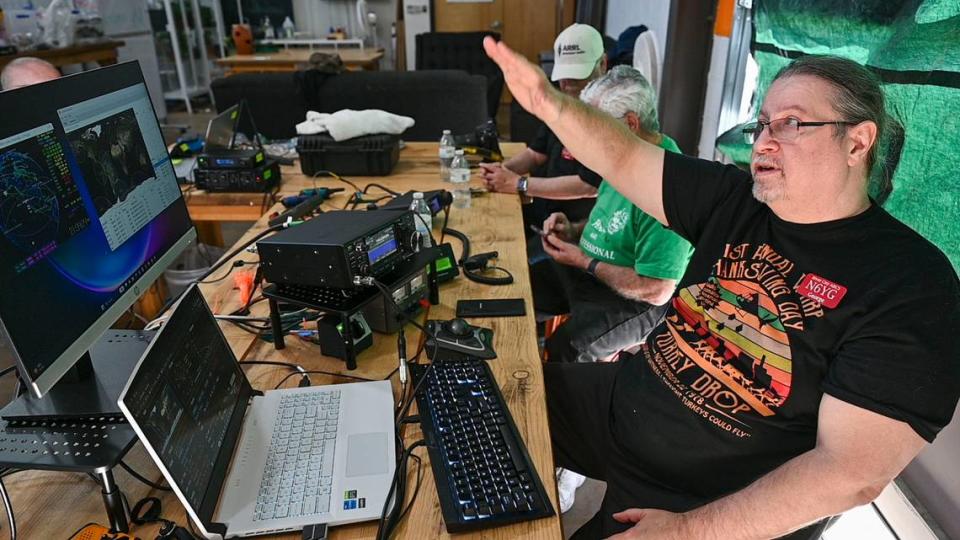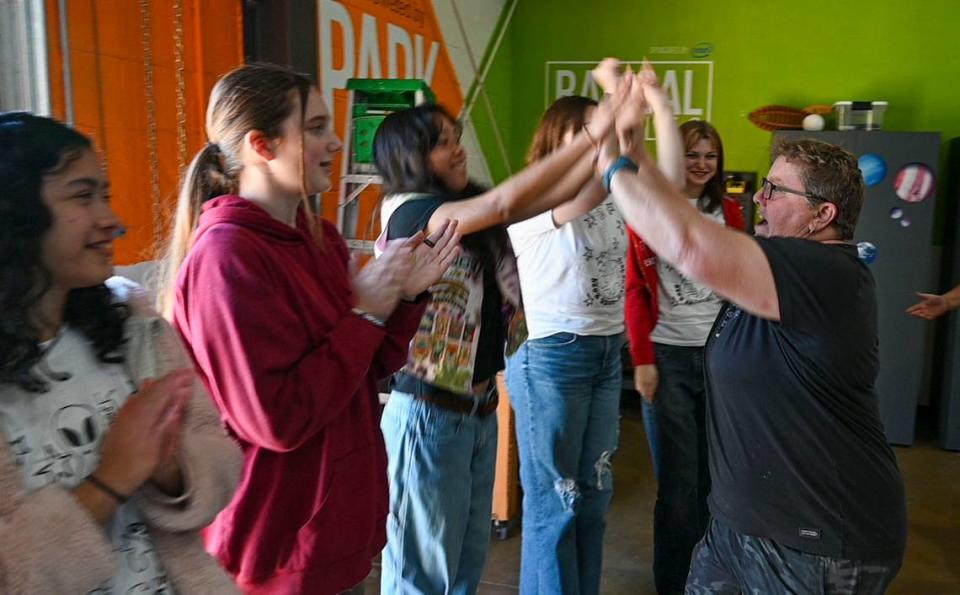Sacramento Girl Scouts gear up to talk to International Space Station. Here’s how they’ll do it
All systems are go!
Sacramento Girl Scouts Troop 1089 worked this weekend in preparation for reaching outer space — using radio communication to talk with astronauts orbiting 250 miles above the Earth.
The team of 14 Senior Girl Scouts, ages 14 and up, is one of 11 educational groups in the nation chosen this winter for NASA’s STEM program called ARISS, or Amateur Radio on the International Space Station. The program challenges students to build a ham radio, giving them a chance to talk with astronauts aboard the International Space Station, something ham radio operators have delighted in doing for years.
“What is the strangest thing to happen to you on the ISS?” said Alana, one of the scouts, on Saturday afternoon as the team rehearsed questions using the radio they’ve built and that they’ll use to connect with outer space this week.
“What are you most looking forward to when you return to Earth?” asked another, as the team eagerly lined up in the STEM center at the Girl Scouts Heart of Central California Council headquarters in East Sacramento.
The council’s STEM center has “a maker space and a fabulous fabrication laboratory,” along with a greenhouse area, said Amanda Banks, Troop 1089 co-leader, who has been guiding the girls’ project along with members of the River City Amateur Radio Communications Society.

How does the NASA program work?
The goal of ARISS, a joint project with other space agencies around the globe, is to “inspire an interest in science, technology, engineering and math,” known as STEM subjects. That, in turn, could be the gateway to a career in science and technology, Banks said.
And the project allows the scouts and other youth to learn about space exploration and how easy it is to reach the ISS, even if it’s over the amateur radio band — a technology with roots in the early 20th century. Amateur radio operators, who are licensed by the federal government in the U.S. and elsewhere, span the globe and use shortwave radio bands to broadcast messages and talk to each other.
ARISS opens up proposal periods several times a year for students as young as kindergartners, but building out a radio post requires the knowledge (and patience) of high-schoolers.
At the end of the project, the teams are rewarded with a time slot to talk with an astronaut for about 10 minutes as they whiz above or near the team’s location.
According to the program, ARISS gives the girls the chance to ask astronauts firsthand what it’s like to live and work in space. The scouts also can ask and learn about the latest experiments being conducted on the 25-year-old space habitat, which is jointly operated by NASA and the space agencies of Russia, Japan, Canada and Europe.

Scouts prepare to chat with ISS next week
The team made final preparations Saturday by hooking up the last of the equipment — radio transceivers, microphones and more — to an antenna assembly perched atop the Heart of Central California Council building on Elvas Avenue.
“That whole assembly was completed probably three weeks ago when it was brought up there,“ said Jennifer Garland, a River City Amateur Radio member, as she pointed to the antenna.
“We’ve been doing regular checks, because of the wind and the weather to make sure that it stays up there right,” she said.
Thankfully, the antenna withstood the aggressive winds Sacramento experienced during last weekend’s storm. Now, the scouts are waiting to hear from NASA on which of the three astronauts will be available and when.
According to data provided by NASA, Sacramento will have several windows in which it is flying above Northern California this week. The first just after 6 a.m. on Tuesday will only be for about five minutes. The best opportunity, according to NASA’s “Spot the Station” website, will be around the same time Thursday when the capital region will have a seven-minute window of visibility. While most of the flybys will be at a shallow angle to the horizon, moving from south to the northeast, Thursday’s window will be the best chance to reach out at 75 degrees above the horizon.
“They’re flying by at over 17,000 miles an hour or almost five miles a second,” Garland said about the astronauts they will be communicating with. However, thanks to the power of shortwave radio communication, the window for communication will be a little longer, around 10 minutes.
Regardless of which of the seven astronauts currently on the ISS will be on the other end — among them Americans Jasmin Moghbeli, a Marine Corps test pilot who was deployed three times to Afghanistan as a helicopter pilot, and Loral O’Hara, who worked on deep-ocean science projects and robots before her selection to the NASA corps — the team is excited to make the connection.
“It’s a once-in-a-lifetime opportunity to get to do this,” said Jennie, 18, another member of the troop.
The entire process has been a team effort. Garland refers to the River City Amateur Radio members as “team hamster” and the girl scouts as “team troopers.”
“That’s how I refer to everybody,” she said.
“The parents have helped out immensely (but) the students — the troopers — have been phenomenal. And my hamsters have been very flexible and really responsive to this project,” she said. “And I really, really appreciate that.”

Girl Scouts support women and girls in STEM
According to the National Science Foundation, 12.3 million women were employed in STEM jobs in the United States in 2021 — just over one-third of the total workforce when compared with their male counterparts. While that number has grown from 9.4 million in 2011, more progress in equity for technical, research and scientific jobs remains a priority for educators and for the Girl Scouts.
Adriana Pedroza, associate director of girl experience for the council, believes it’s important to find more opportunities for girls of all ages to know and learn from female STEM professionals in the field. The ARISS program is just one of the many ways the Girl Scouts are providing those opportunities for capital region families.
“It really fosters their sense of belonging in that space,” Pedroza said.
Alana, 14, wants to pursue a career that incorporates “a little bit of music and a little bit of science.”
“I’ve always been interested in science. I’ve loved doing stuff with like technology and engineering stuff,” she said. “So Girl Scouts has really helped me build on my courage.”
According to the national Girl Scouts organization, 80% of female leaders in tech were Girl Scouts growing up.


